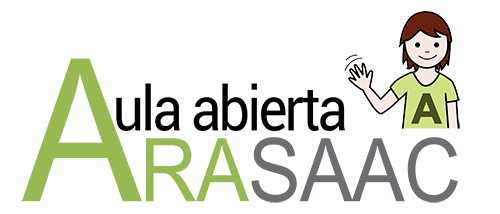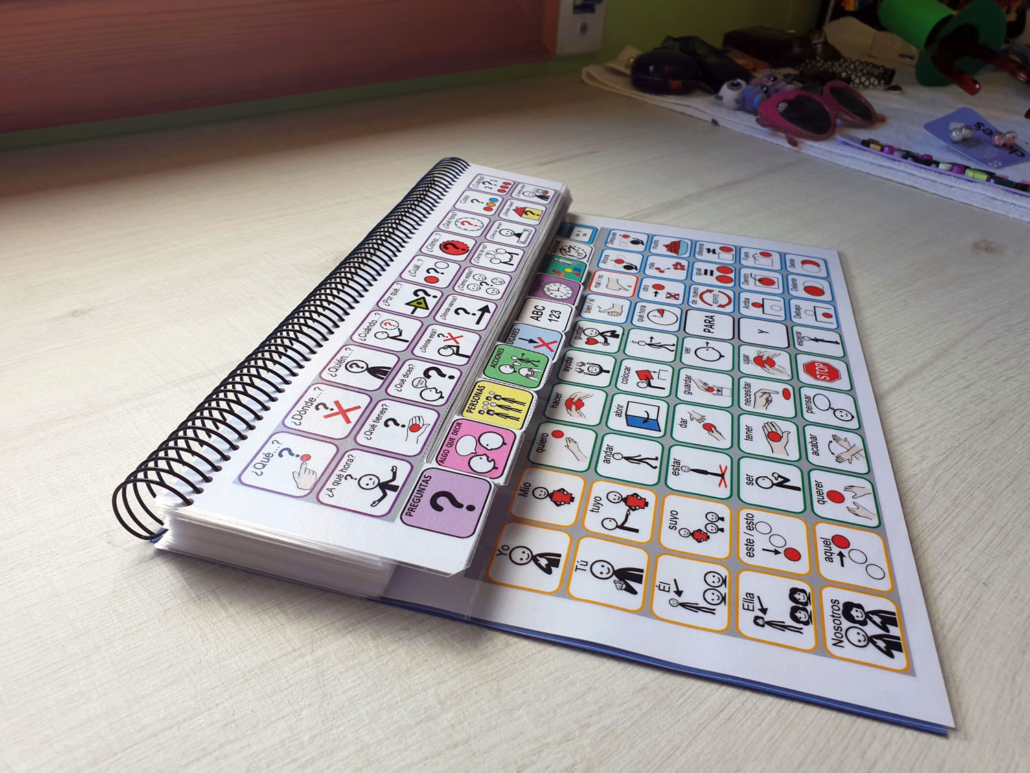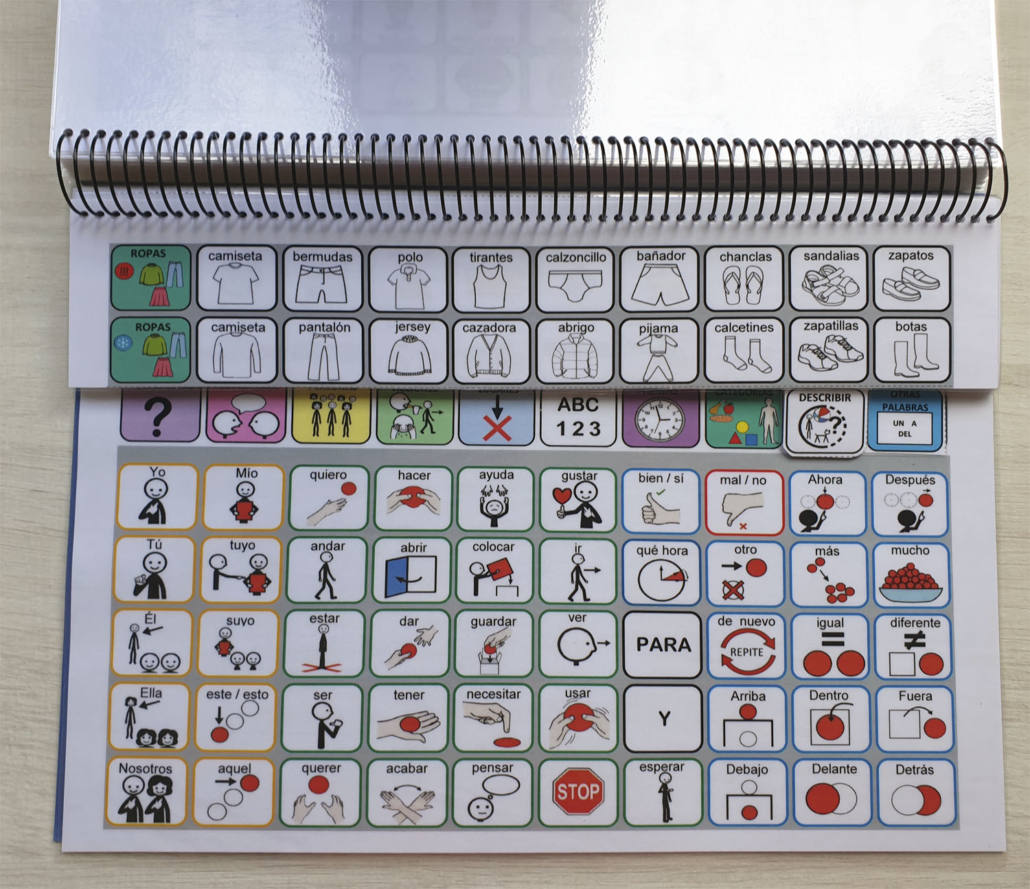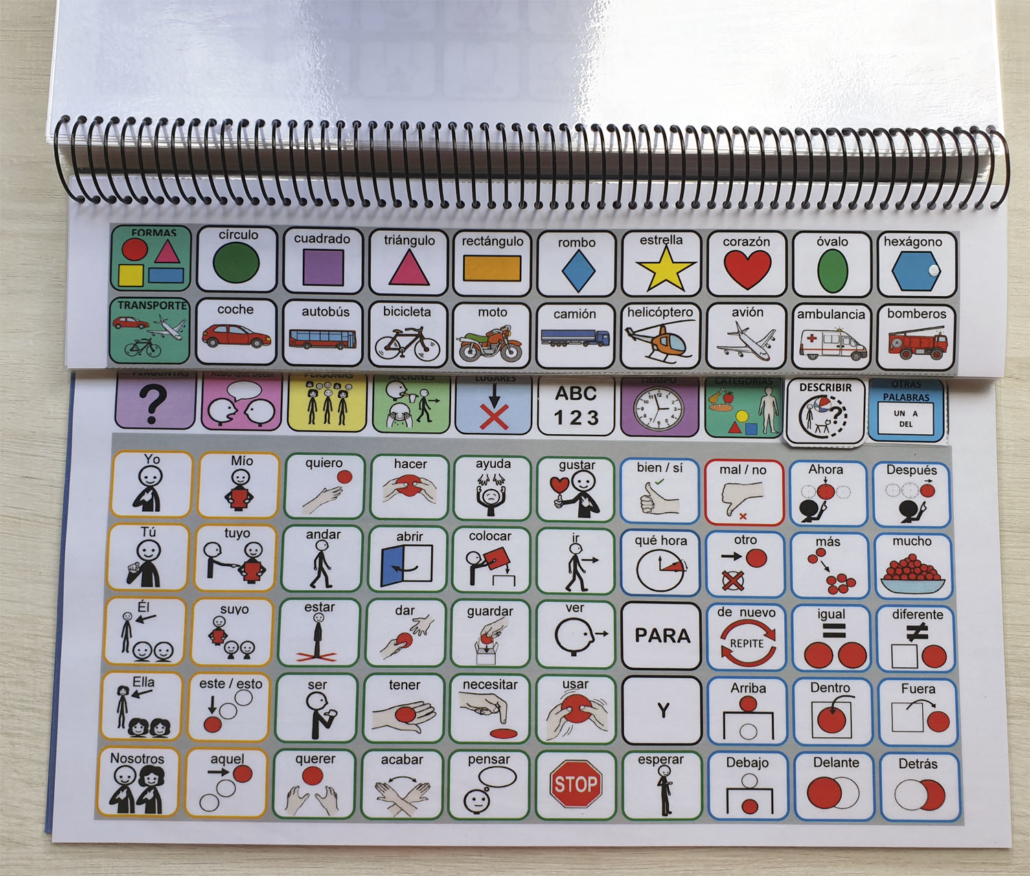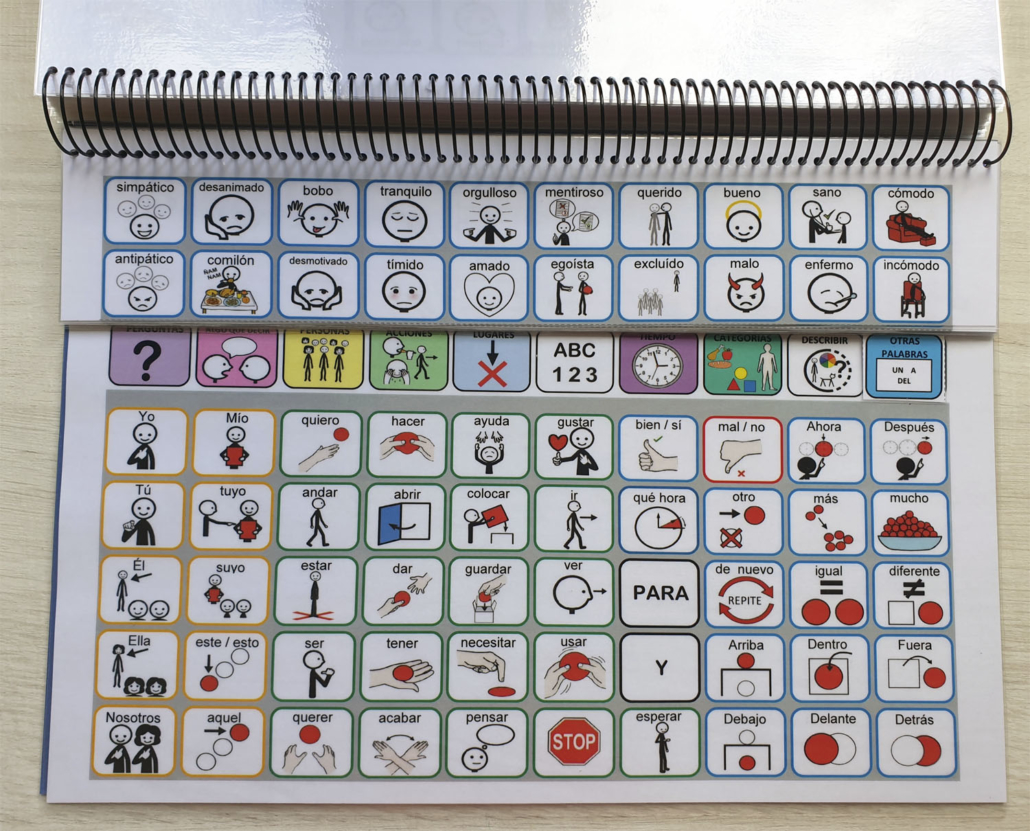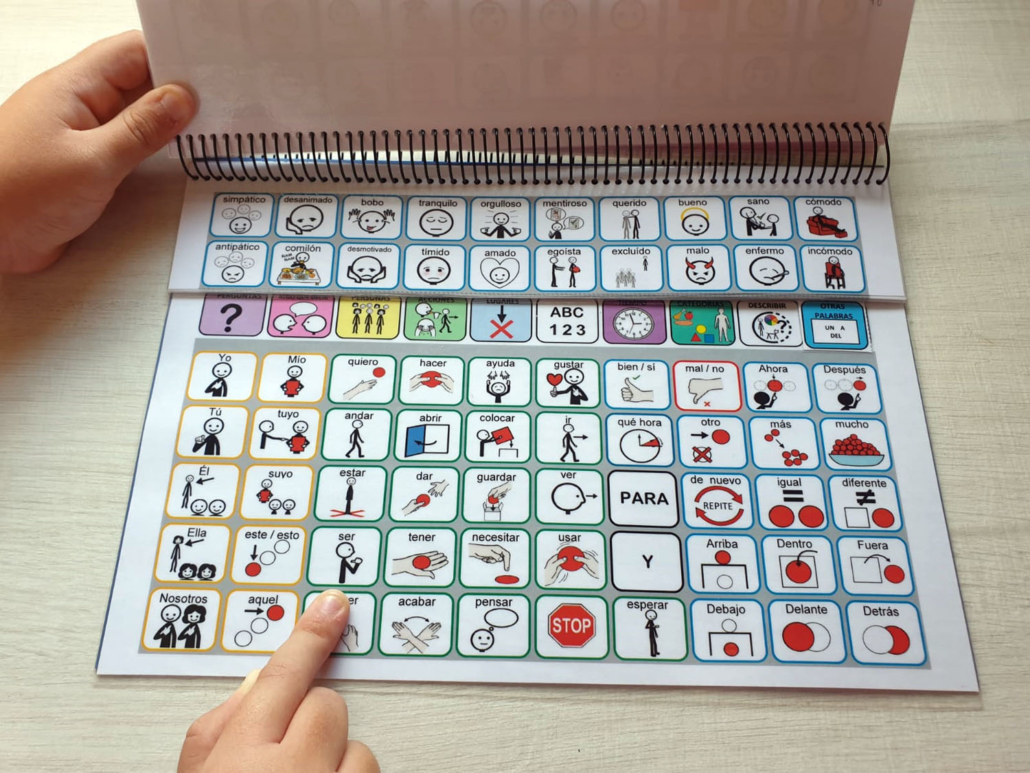 This work is licensed under a Creative Commons Attribution-NonCoercial-ShareAlike 4.0 International license.
This work is licensed under a Creative Commons Attribution-NonCoercial-ShareAlike 4.0 International license.
Our thanks to Fabiani Eggers and Renata Bonotto for sharing their work with ARASAAC.
“Augmentative and Alternative Communication (AAC) is not incompatible but complementary to the rehabilitation of natural speech,and can also help its success when possible. It should therefore not hesitate to introduce it at an early age, as soon as difficulties in the development of oral language are observed, or shortly after any accident or disease has caused its deterioration. There is no evidence that the use of AAC inhibits or interferes with the development or recovery of speaking.” Carmen Basil in https://arasaac.org/aac/en
CLARIFYING THE CONCEPT OF AUGMENTATIVE AND/OR ALTERNATIVE COMMUNICATION
Before starting to elaborate our communication notebook, it is important to understand that Augmentative and/or Alternative Communication is not the end,but the means that the person uses to express themselves,and therefore participate socially in the context that surrounds them.

Augmentative and/or Alternative Communication Systems (AACS) are not incompatible. but complementary to the rehabilitation of natural speech,and can also help the success of it when it is possible. There should therefore be no doubt about introduce it at an early age,as soon as difficulties in the development of oral language are observed, or shortly after any accident or disease has caused its deterioration. There is no evidence that the use of AAC inhibits or interferes with the development or recovery of speech.
Links of interest before you begin:
WHAT IS AN AUGMENTATIVE AND ALTERNATIVE COMMUNICATION NOTEBOOK WITH ESSENTIAL WORDS – CORE VOCABULARY?
Throughout this tutorial, we will use as a model this Communication Notebook prepared by Fabiani Eggers and Renata Bonotto, collaborators of ARASAAC.
Before we start building our communication notebook, we need to know what we mean when we talk about essential words or core vocabulary.
When we talk about essential words or core vocabulary we are referring to a limited set of words that have been determined to be very useful for establishing functional communication in different contexts.
Karen Erikson defines this vocabulary as a “relatively small basic vocabulary that varies little between individuals or settings.”
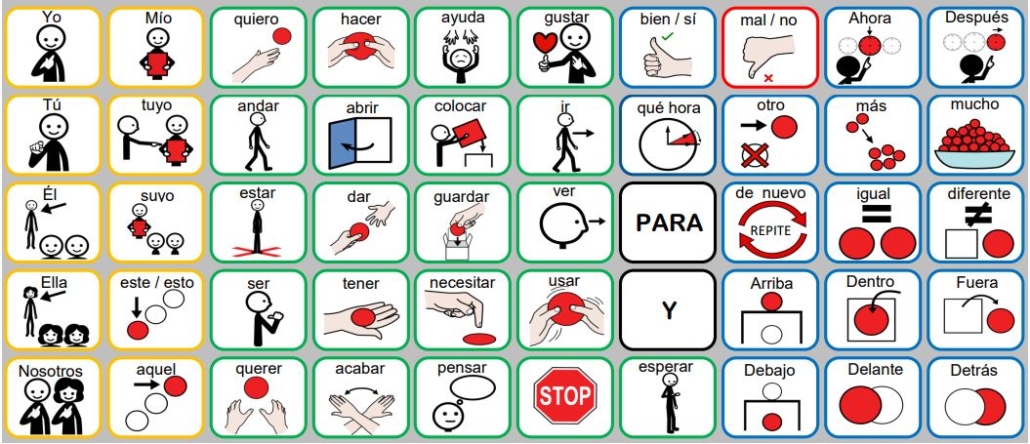
As you can see in the screenshot we have selected, this vocabulary is mainly composed of personal pronouns, usual verbs, adverbs, some prepositions and descriptives,mainly. The order of vocabulary is very important to work simultaneously on morphosyntax and narrative discourse.
The structure of this notebook, which we have taken as an example, perfectly combines the essential words at the bottom, along with the vocabulary repertoires at the top.
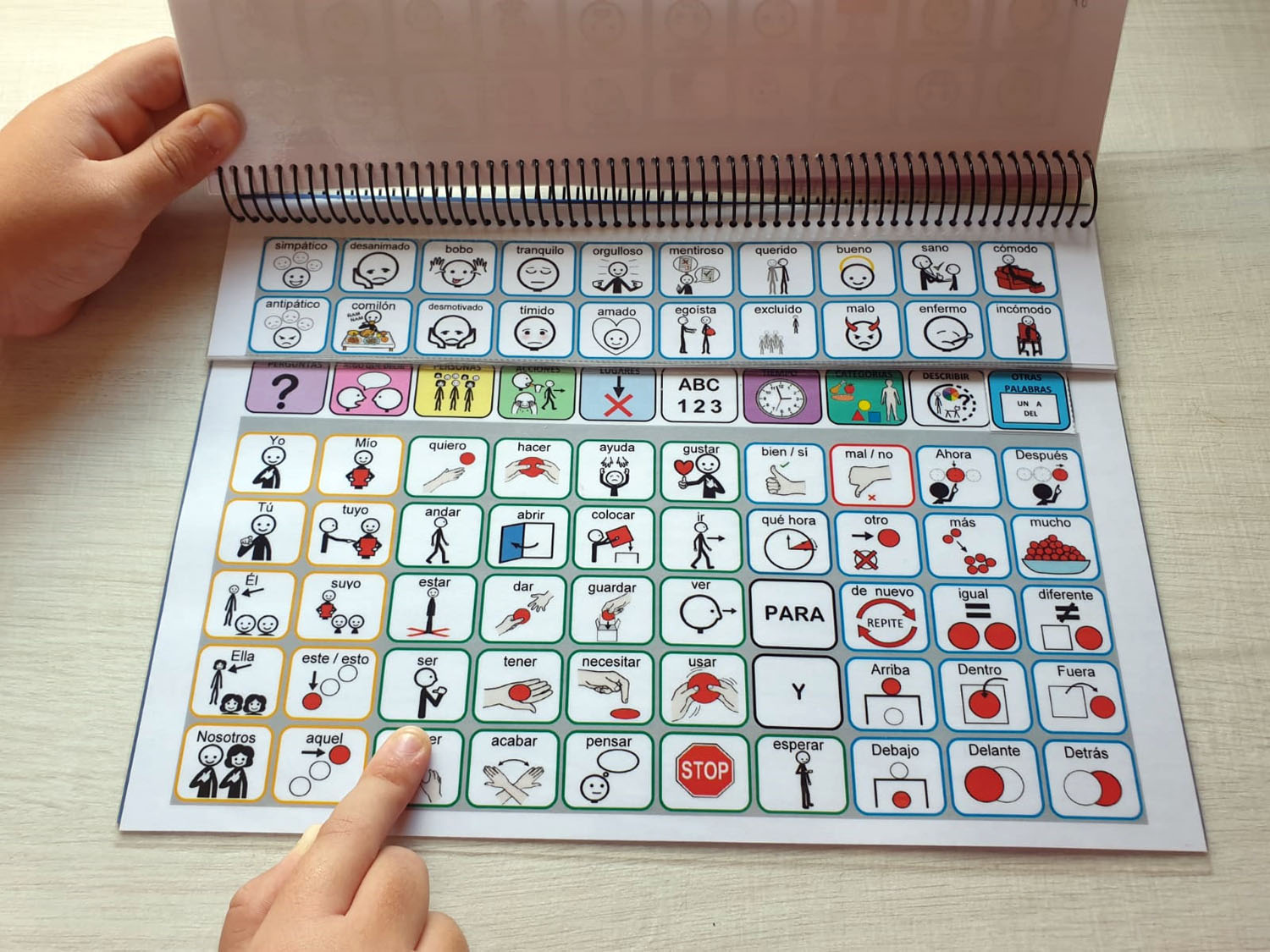
Finally, we must emphasize that the essential words vary from one language to another and depend directly on the environments in which they are going to be used.
As always, we highlight the importance of the multidisciplinary work of professionals and the family and the adaptation of this type of communicators to the person,taking into account their abilities, needs, interests, etc., and the contexts in which they will operate.
Continuous monitoring and evaluation will tell us if the results are adequate and what adjustments we should make.
WE STARTED BUILDING THE CORE VOCABULARY NOTEBOOK.
As we have already mentioned, we are going to use as a model this editable communication notebook, prepared by Fabiani Eggers and Renata Bonotto,which you can download for free from the following link:
Flipbook – Communication notebook – Low technology | ARASAAC: CAA Materials
In the Spanish version, three notebooks adapted to the feminine, masculine and schematic gender are included.
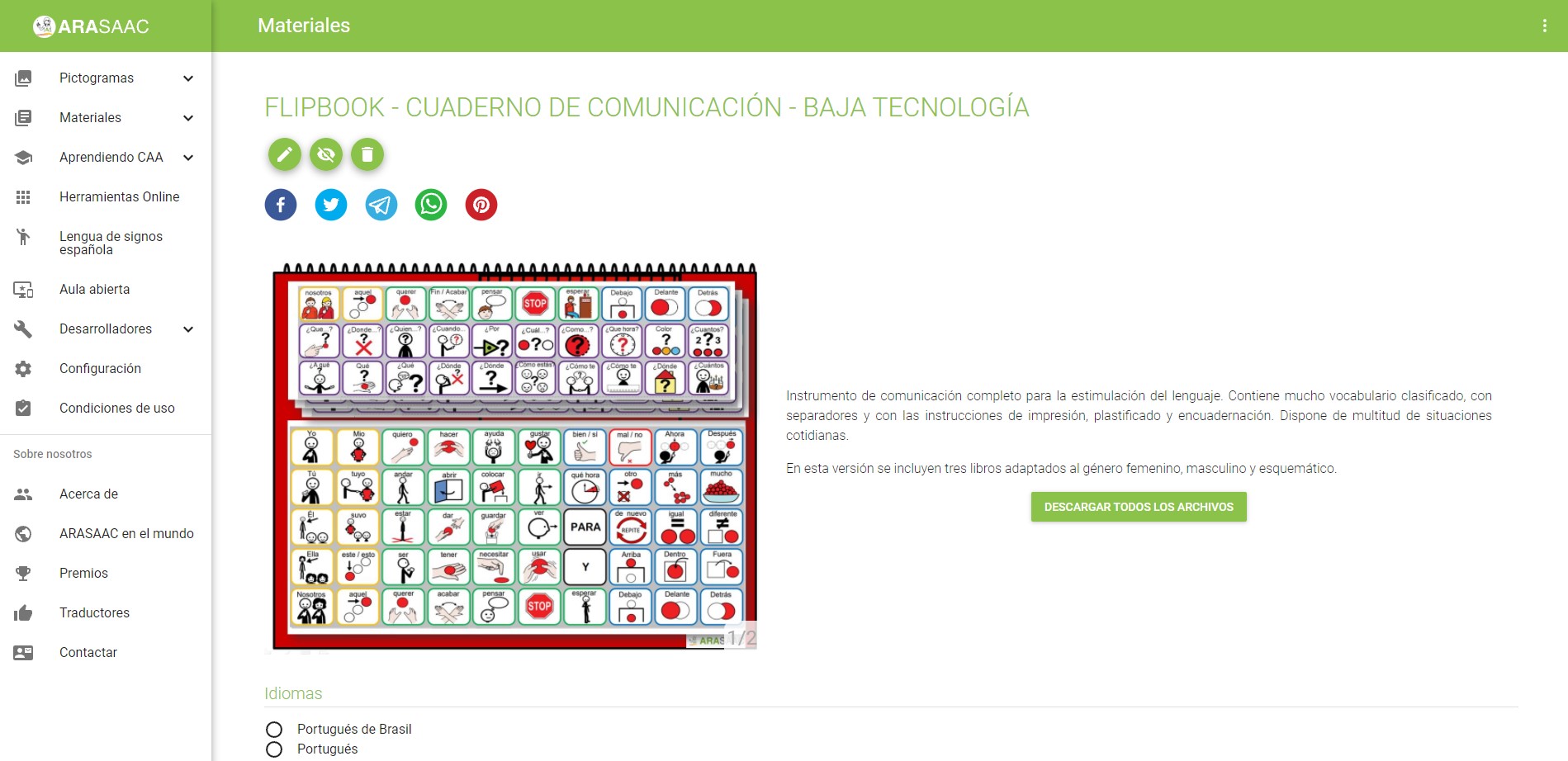
Once the file is downloaded, we proceed to print the entire document.

Next, we cut out the different vocabulary repertoires that we will place at the top of the main board.

For the notebook to last in time we recommend plasticizing it.

Finally, we use a binder to make the holes to the different sheets that make up the notebook and place the spiral.
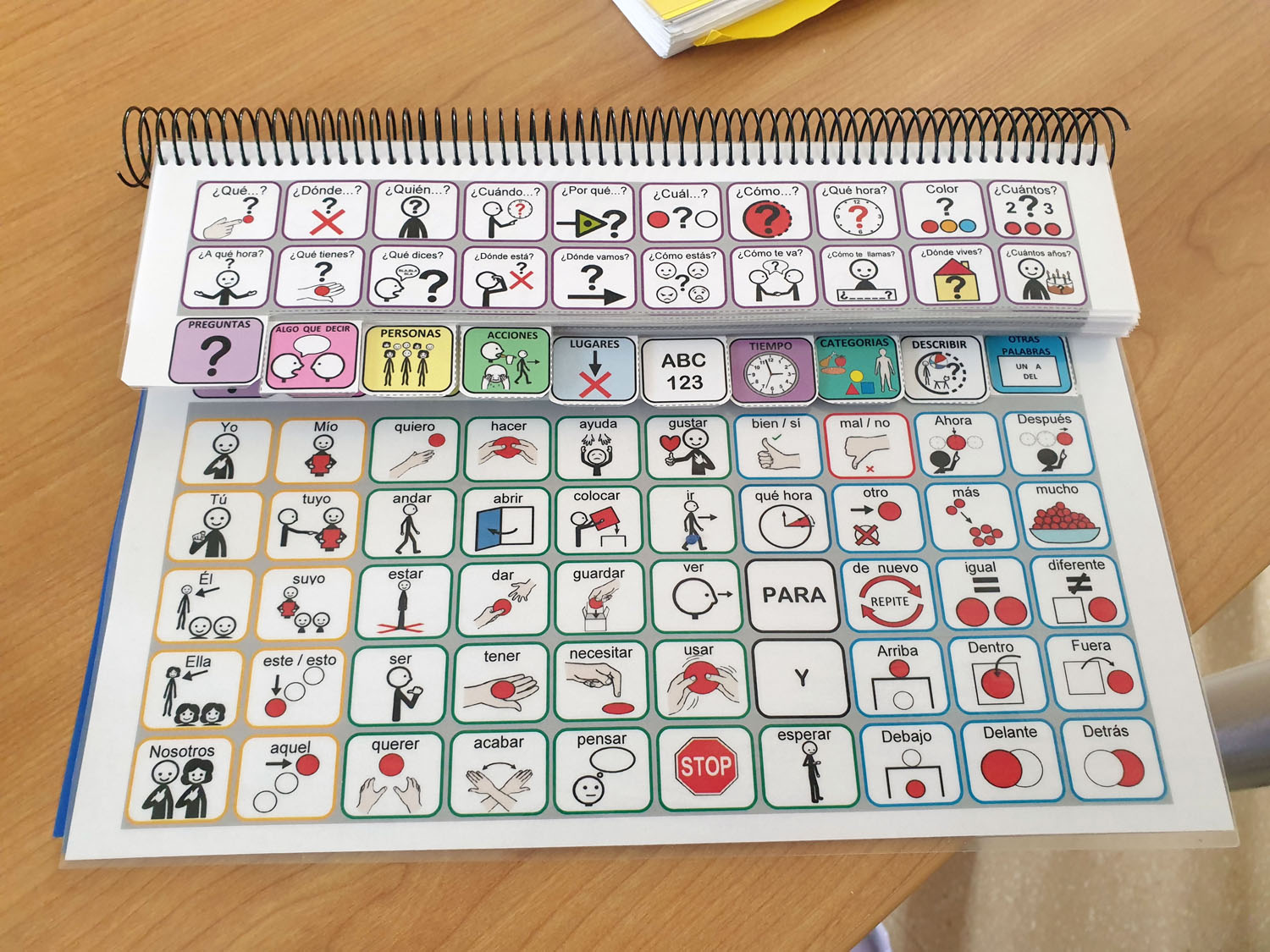
WE BEGIN TO USE IT IN ALL SITUATIONS OF EVERYDAY LIFE







